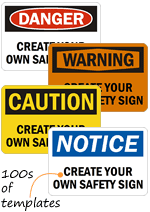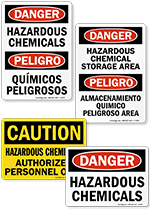The 5 things every employer should know about heat stress
Summer is the time when outdoor workers — construction crews, farmhands, roofers, and pavers, to name a few — are right in the sun’s line of fire. This puts them at a higher risk of heat stress resulting in heat stroke, cramps, and rashes. Severe heat with humidity also makes them vulnerable to physical injuries (by falling and losing grip) when they experience sweaty hands and dizziness.
Over the past ten years, there have been an average of 36 heat related deaths and 2,810 illnesses in the country.
Every employer should have a checklist:
As an employer, the Occupational Safety and Health Administration puts the responsibility of protecting workers against heat stress, on your shoulders. The federal safety agency can also hold you liable for injury, illness, or death therefore caused. So, it becomes important that you create conditions that prevent heat stress among workers rather than treat it at a later stage.
1. Plan ahead
It pays to plan ahead. Have an emergency response plan for heat prevention in place. Some administrative controls like scheduling adequate rest breaks, providing immediate access to cooling stations (with shade, cool water, cooling pads in sufficient quantity), and setting work hours in cooler parts of the day keep heat stress among employees in check.
You can also employ a few engineering controls to mitigate the risk of heat stress in employees. Covering hot surfaces to cut radiant heat, installing air conditioners and providing natural ventilation for cool air, using dehumidifiers to reduce moisture are some of them.
Keep tabs on the weather consistently to check for heat waves. OSHA makes it easy for employers and supervisors to see if the conditions outside are too hot to handle. With its Heat Safety Tool app, users can calculate the heat index of a worksite and view the risk level for those working outdoors, so that employers and employees can take necessary preventive action.
2. Hydrate and pre-hydrate
Ask workers to drink up to 16 ounces of fluid before starting an activity and a glass of water (or eight ounces of fluid) every 20 minutes during the activity. Some experts advise against drinking plain water as it quenches thirst too quickly but we recommend it over energy drinks that are loaded with sugar and caffeine. A healthy alternative to plain water is plain coconut water that “contains easily digested carbohydrate in the form of sugar and electrolytes.”
3. Acclimatize
Workers should be allowed to acclimatize themselves to the heat. How long a worker takes to adjust to heat depends on personal physical health and age. However, the general rules are this: Workers who have not previously worked in hot environments can be asked to do 20% of full day’s work on the first day and increase their work by 10-20% each day. Those returning to hot work environment after a week or more can be asked to do 50% of a full day’s work and gradually increase it by 10-20% each day.
Three in four of OSHA’s 11 citations for heat related illnesses in 2013 were for failing to get employees acclimated to the heat. Northern states face a greater number of heat problems, due to a lack of acclimatization, according to OSHA’s assistant secretary for labor and health, David Michaels.
4. Improve PPE and clothing
More often than not, workers are tempted to remove personal protective equipment (PPE) like safety gloves and goggles in hot working conditions. But that’s inviting a ton of hazards their way. Carefully select materials for PPE that keep workers cool while also providing necessary protection. Hard hats with vents and ventilated gloves can offer relief against heat trapping inside the PPE. Allowing frequent breaks at cooling stations where workers can remove their protective gear also eliminates the chances of the heat trapping inside the PPE.
The type of clothes workers wear also affects their body to adjust to heat. Loose fitting clothes made of natural fibers like cotton allow the skin to breathe. Also wearing light colored clothing keeps the body cool as lighter colors reflect heat better.
5. Train workers
It’s important to train workers so that they recognize symptoms of heat illnesses in themselves and in co-workers, understand the need to drink water, and take breaks to prevent heat stress.
- Heat stroke can be detected by high body temperature, confusion, loss of coordination, excessive sweating, hot and dry skin, and throbbing headache. More severe symptoms of heat stroke include seizures and coma.
- Symptoms of heat exhaustion include rapid heartbeat, heavy sweating, extreme weakness or fatigue, dizziness, nausea, vomiting, irritability, fast, shallow breathing, slightly elevated body temperature.
- Heat cramps are evident from muscle cramps, pain, or spasms in the abdomen, arms or legs.
Training is also important for temporary workers, who are often more at risk of heat illness. If they are suddenly called on to work outdoors, they may not have time to acclimatize to the heat.
Related articles
Category: Construction, Safety Tips













